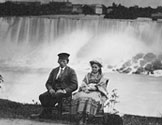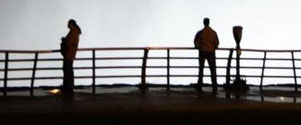

|
||||||||||||||||||||||||||||||||||||||||||
|
| ||||||||||||||||||||||||||||||||||||||||||
 |
 |
 |
 |
 The Hodge Opera Fire  The Hodge Opera House, a famous Lockport landmark, was devastated by fire about 1:00 PM Saturday afternoon, Feb. 25, 1928. The temperature had been 3 degrees above zero the previous night, and the weather continued windy with freezing temperatures on Saturday. The second tragic fire in the history of the Opera House erupted in the boiler room of the adjoining Merchant’s Gargling Oil Building. The strong winds quickly spread the fire to the Hodge Opera House and twenty-four hours later the entire block lay in ruins. Eleven million gallons of water were used in fighting the blaze, with a great deal of the water freezing on the building to form immense icicles which are clearly seen in pictures of the fire. Edwin J. Coyle was chief of the Lockport Fire Company and supervised the fire team on the scene. Volunteer fire companies from other towns were called in, including firemen from Wilson, Medina, Newfane, and North Tonawanda. A pumper truck from Niagara Falls and two trucks from Buffalo also assisted at the scene. The plume of smoke from the fire was so immense; ashes were reportedly found over a mile from the site. A “Union Sun” article stated that it was fortunate that there was about four inches of snow on the roofs of the houses, preventing other buildings from catching fire. Many people who owned properties in the area manned their own hoses to put out small fires that erupted. Windows in the Lockport Light, Heat and Power Company building across the street were cracked from the intense heat and employees of the Light, Heat and Power Company formed a bucket brigade to prevent further damage to their own building. Many of the stores and businesses in the area kept their buildings open for the firemen to come in and warm themselves. The Light, Heat and Power Company building assisted in this way as did the Kresge Store. The Salvation Army and many of the businesses in the area provided hot coffee and sandwiches for the firemen. Fire fighting continued all night into Sunday morning. The Lockport Light, Heat and Power Company connected searchlights on adjoining buildings to supplement the lights on the fire trucks. One searchlight was on the third floor of the Farmers and Mechanics Bank on Main and Locust Streets and another searchlight was placed on the Flatiron building across Market Street. The fire at the Hodge Opera House, the second major fire at that site, ended the reign of this once grand building. The advent of moving pictures had largely reduced the popularity of live stage shows and the Hodge Opera House removed its third floor theater in 1914 and utilized the space for additional office rentals. Even without a theatrical stage, the building continued to be called the Opera House until the fire of 1928 ended the building’s usage completely. However, the next tenant on the scene, the Bewley Building, was constructed utilizing the existing back wall from the Hodge Opera House, in effect continuing a treasured legacy in Lockport that began in 1871. Douglas Farley, Director Ann Marie Linnabery Erie Canal Discover Center 24 Church St. Lockport NY 14094 716.439.0431 CanalDiscovery@aol.com www.NiagaraHistory.org |
|